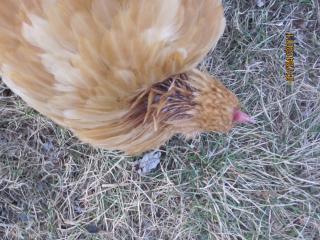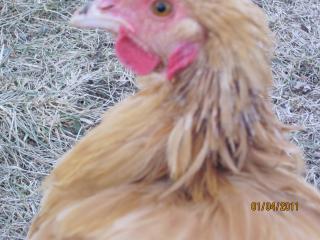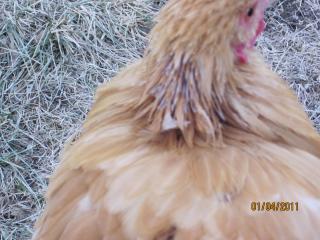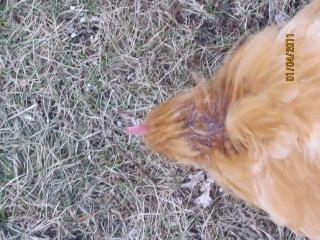- Nov 12, 2010
- 4
- 0
- 7
I am a new chicken owner. I have three buff orpington hens that are about 9 months old. They have this coop---> http://www.mypetchicken.com/catalog/Chicken-Coops/The-Saltbox-Coop-with-Run-Ships-Free-p697.aspx I use pine shavings. I live in Fort Wayne, Indiana so it is bitter cold right now. During the summer they are usually free to roam the back yard most of the day. However, with the snow and cold they are only getting out for 1-2 hours a day. Plus a hawk has been stalking them.
Anyways, I am having a problem with one of my girls. She has a big bald spot on the back of her neck that extends around to the front a bit. I think she might be missing some feathers from the end of her tail too. The feathers around the neck look like they have been broken-- like short shafts of straw. Also her comb and wattle are pale. Not the bright red that it used to be. She seems to be the lowest in the pecking order.
I am not sure if she is being pecked at or molting or is sick. Today I googled it as much as I could and so far I have put vinegar in their water, put vicks vapo rub on the "bald" spot and given them some yogurt and sunflower seeds for protein.
Please help. I need ideas and suggestions!
Thanks
Rusty
Anyways, I am having a problem with one of my girls. She has a big bald spot on the back of her neck that extends around to the front a bit. I think she might be missing some feathers from the end of her tail too. The feathers around the neck look like they have been broken-- like short shafts of straw. Also her comb and wattle are pale. Not the bright red that it used to be. She seems to be the lowest in the pecking order.
I am not sure if she is being pecked at or molting or is sick. Today I googled it as much as I could and so far I have put vinegar in their water, put vicks vapo rub on the "bald" spot and given them some yogurt and sunflower seeds for protein.
Please help. I need ideas and suggestions!
Thanks
Rusty
Last edited:






